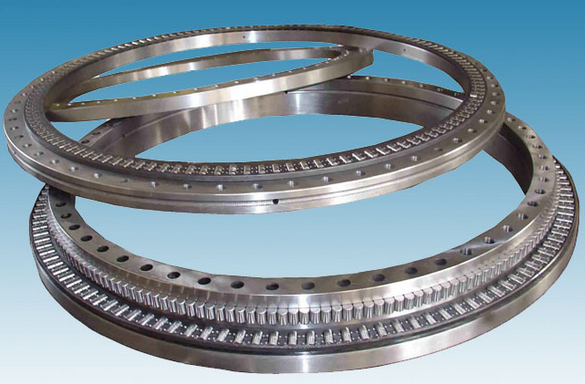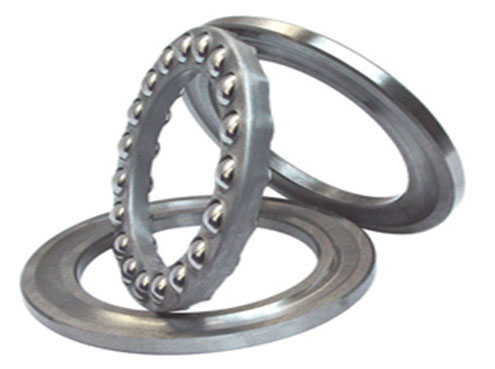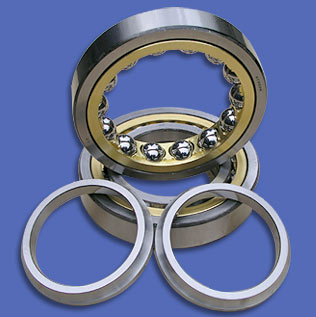Rotary table bearings can be roughly divided into the following structural types based on different structural types:
1. Four point contact ball turntable bearing
2. Double row four point contact ball rotary bearing
3. Cross cylindrical roller turntable bearing
4. Cross tapered roller turntable bearing
5. Three row cylindrical roller combined turntable bearing
Rotary table bearings with a minimum inner diameter of 80 mm and a maximum outer diameter of 6070 mm in various structures.
The tolerance and clearance of the rotary table bearings shall comply with JB/T 10471 "Rolling Bearing Rotary Table Bearings", and the tolerance and clearance of the rotary table bearings used in wind turbines shall comply with JB/T 10705 "Rolling Bearing Wind Turbine Bearings".
Holder
There are different structural types of cages used for rotary table bearings, such as integral cages, segmented cages, or isolated cages. The overall or segmented cage is made of 20 # steel or ZL102 cast aluminum alloy. The isolated cage is made of polyamide 1010 resin, ZL102 cast aluminum alloy, or QA110-3-1.5 aluminum bronze. In recent years, with the continuous development of the material industry, nylon GRPA66.25 has also been promoted and applied in the design of segmented cages.
Rotary table bearings mostly operate under heavy load and low speed operating conditions. Generally, using grease filled lubrication to lubricate the bearings can achieve extremely satisfactory results. Commonly used lubricating greases include calcium based grease, lithium based grease, aluminum based grease, and high-temperature grease. Users can choose the most suitable lubricating grease according to their specific situation.
The sealing of the rotary table bearing is not only to prevent the filled lubricating grease from leaking out, but also to prevent external dust, impurities, and water from invading the inside of the bearing and affecting its normal operation. Due to the fact that the rotary table bearings mostly operate under heavy loads and low speeds, the sealing types of the bearings adopt two structures: rubber sealing rings and labyrinth seals. The rubber sealed structure itself has the advantages of simple structure, small space occupation, and reliable sealing performance, and has been widely used. However, its disadvantage is that the rubber sealing lip is prone to early aging and loss of sealing performance in high temperature conditions. Therefore, labyrinth seals should be used for rotary bearings operating under high temperature conditions.





